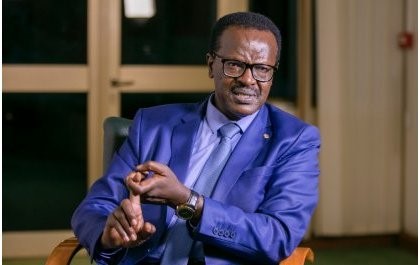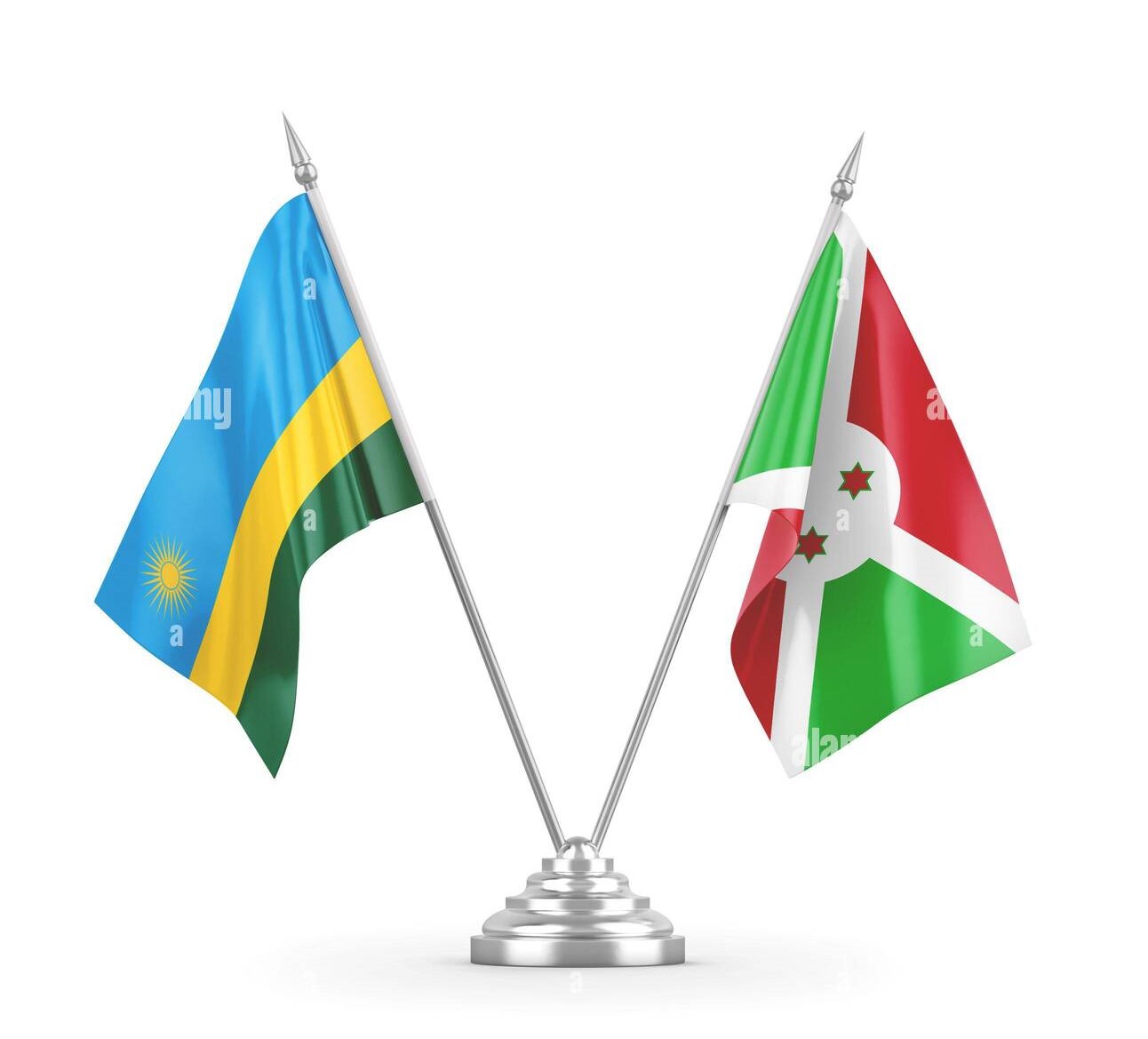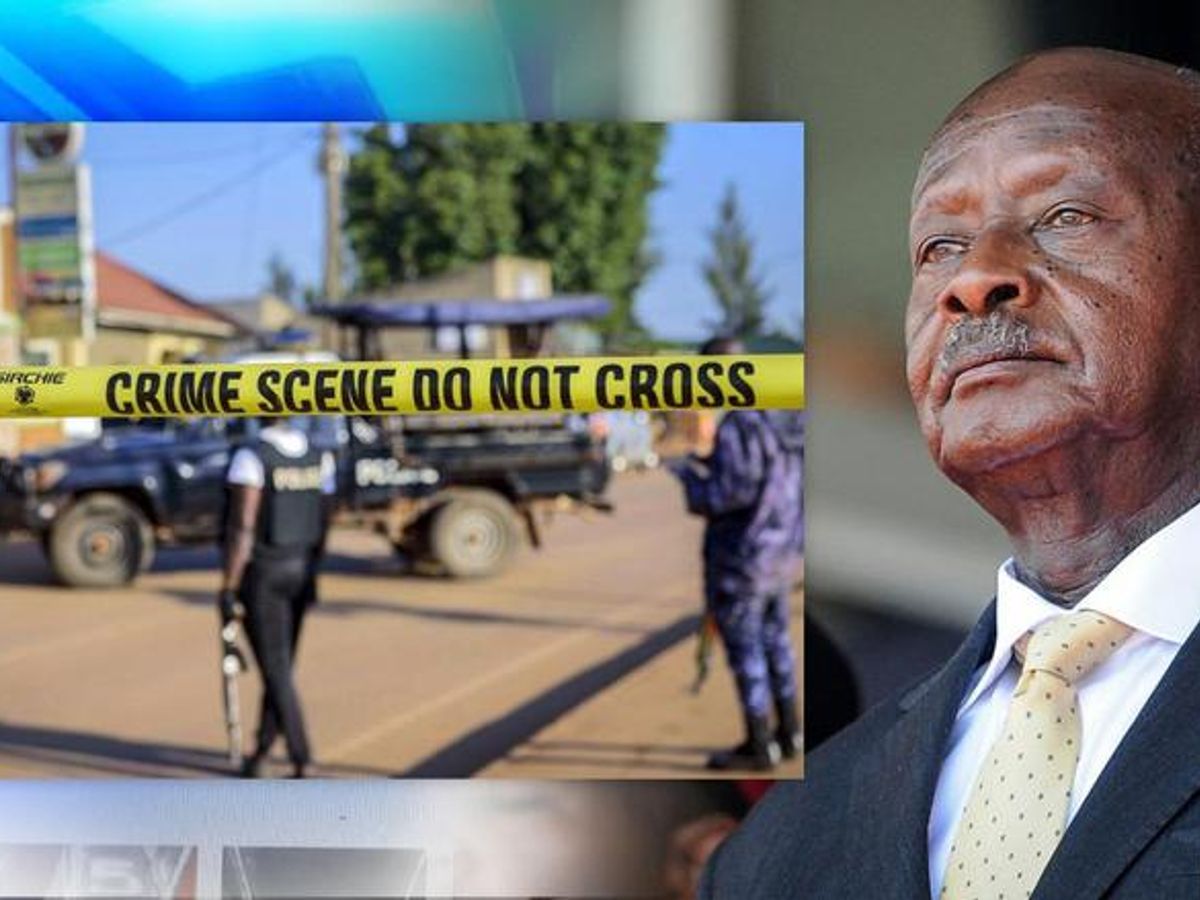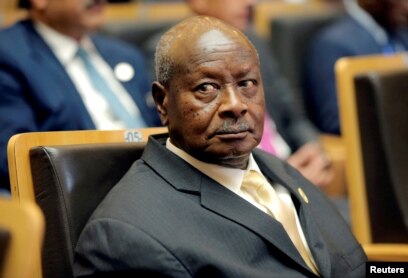Regional
Rwandans were key in bringing Museveni to power
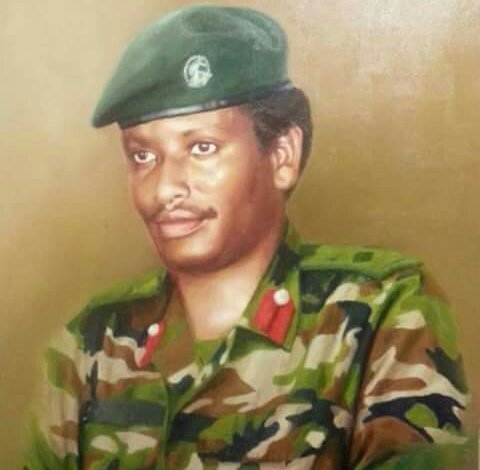
In
April, Rwandan researcher Tom Ndahiro penned a revealing Op-Ed, “Note to
Kampala – Rwigema is ours; not yours,” that shed light on the role of Rwandan
refugees in the 1981-86 National Resistance Army (NRA) liberation war that
brought Ugandan dictator Yoweri Museveni to power.
Formed
in 1981, the NRA, the military wing of the National Resistance Movement (NRM),
was a rebel army that waged a guerrilla war against the government of Milton
Obote, and later that of Tito Okello. Upon capturing power, the NRA became the
national army.
By
the time that the victorious NRA entered Kampala, in 1986, more than a quarter
of its 16,000 combatants were Banyarwanda, while Fred Rwigema, a Rwandan, was
its deputy commander. After the NRA captured power in 1986, Rwigema – who was
amongst the initial 27 armed fighters who took to the bush in 1981 to begin the
guerilla war – became the deputy Minister of Defence.
As
Ndahiro noted, before and after the capture of Kampala the 1st, 7th, 11th,
13th, 19th, and 35th NRA battalions were predominantly made up of Banyarwanda.
In
conversations with fighters who were with the NRA since 1981, Ndahiro noted,
they could name by heart, without needing to crosscheck any document, at least
80 of their comrades who were commanders in the NRA war.
“They
talked about their colleagues who are still alive and remembered fondly those
who were killed in battle in the NRA, describing the circumstances of their
death in the line of fire. Moreover, they said that they felt a responsibility,
on behalf of their fallen comrades, of refreshing the minds of the authorities
in Kampala who seem to have suddenly forgotten how they got in power,” Ndahiro
wrote.
“You want to know all the commanders who were
in the NRA or just the most senior,” a former NRA and RPA officer, now retired,
asked him, before volunteering to start with the Brigade Commanders – Lt Col
Adam Wasswa, Major Chris Bunyenyezi, Major Stephen Ndungutse, and Major Sam
Kaka, who was the NRA’s Military Police Commander.
“They
can’t forget Captain Ndamage. He commanded three battalions and was killed by
enemy fire in Gulu,” Ndahiro’s source said, before going into details of some
of the heroics of the Banyarwanda in the NRA war.
Ndahiro
also met another comrade of the NRA who was equally astonished that the
authorities in Kampala don’t recall the Banyarwanda commanders.
“They
don’t remember any commanders?” he asked rhetorically before counting off a
list of Commanding Officers (Cos) and their NRA battalions, including, Captains
Tadeo Gashugi (9th btn), Dodo Twahirwa (21st), Mico Edison (35th), Wilson
Bagire (13th), Edward Karangwa (95th), Sam Byaruhanga (6th), Wahabu (55th), and
Lt Fred Nyamurangwa, the commander of the 27th battalion.
Ndahiro
added: “Another comrade quickly shot off a list of commanders: Cyiza Willex,
Boniface Bitamazire, Thadeo Gashumba, John Gashumba, Vedaste Kayitare, Paul
Katabarwa, Fred Maregenya, John Gashugi, Emmanuel Kanamugire, Matayo
Twagirumukiza, and Nathan Ngumbayingwe, among so many of Kampala’s forgotten.
“After
these discussions, I came out with the feeling that had I talked to ten former
NRA commanders the list of their Banyarwanda comrades could have easily shot up
to 100 commanders that the authorities in Kampala say were ‘anonymous’.”
It
is one thing to forget, Ndahiro noted, and quite another to refer to the
commanders who got you where you are as “Johnie-come-lately,” a slight that
Banyarwanda joined at the end of the war.
“But
imagine an army that makes commanders people who have just joined the war
instead of those who have experience. In fact, they were commanders because of
their experience in battle. They have even shamelessly forgotten Col Charles
Musitu who was with them since the FRONASA days in the 1970s. If they can
forget him, surely this is a case of acute amnesia that won’t allow them to
remember who captured Kampala, as we shall see below.”
“Imagine
the character of people who are so eager to dismiss the contributions of their
comrades that they are ready to make the preposterous claim that the
Banyarwanda who were at the ranks of Colonel, Major, Captain in 1986 had just
joined the NRA,” Ndahiro wrote.
And
he asked – what kind of army gives entry-level ranks of Colonel, or was this a
special privilege reserved only for the Banyarwanda? Of course, he continued,
they were fierce commanders who earned those ranks despite, not because of,
being Banyarwanda.
They
didn’t benefit from tribalistic favoritism as some did. “How can they forget the heroism of Captain
(Jo1) Ngoga who commanded the company that captured Kololo Summit View, which
turned out to be decisive in the capture of Kampala as government soldiers
deployed on this hill were shelling and causing major casualties to NRA’s 1st
and 7th battalions that were advancing from Clock Tower towards the city center
to capture Parliament and Radio Uganda? It is after the action of this
Munyarwanda commander that NRA forces were able to move into the city to capture
Kampala. It’s unforgettable!”
Ndahiro
also brings to the readers’ attention an
ambush in 1984, in Singo, that almost claimed Gen David Tinyefunza and other
Ugandan commanders, including Gen Henry Tumukunde, when a small unit of
Banyarwanda soldiers and commanders, Kangaho and Gatsinzi, stormed to their
rescue. As noted, Tinyefunza had been chief of intelligence and was left in
charge of NRA headquarters and Sick Bay in Singo. In the Sick Bay were
Tumukunde, who had been shot in the leg, and other commanders, who Kampala
often tries to lionize at the expense of Banyarwanda. Only a small force was at
the Headquarters; others had gone to attack Hoima.
Tinyefunza
received information of an impending enemy attack on the Headquarters. Based on
this intelligence tip, Tinyefuza took a decision to immediately shift the
headquarters (and Sick Bay) from Singo. As he was moving his forces and the
sick, they fell in an enemy ambush.
With
their lives in danger, the small unit of Banyarwanda fighters initiated a surprise
attack, and quickly neutralized the enemy. These gallant commanders were later
killed in different battles shortly after. Gatsinzi fell in Gulu while Kangaho
fell at Birembo, near Kabamba in Mubende, as he fiercely tried to dismount an
enemy who had a machine gun and was causing serious losses to the NRA force;
this was shortly after the attack on Kabamba II when the fighting between the
NRA and UNLF (government forces) heated up.
These
are the gallant fighters that the authorities in Kampala are erasing, Ndahiro
wrote, by saying that “they must have fought anonymously.” According to
Ndahiro, a touch of class would have these shameless people belittle those who
are still alive but not their deceased comrades; they have even forgotten those
they once sang about in the “melancholic song honoring the fallen brave
comrades by name – Fellow Combatants” like the late Rwamukaga and Kangaho.
As
the battle heated up and courageous Banyarwanda like Kangaho were falling to
enemy fire Museveni had left for Sweden. Even then, it was Banyarwanda soldiers
who minded Museveni’s security.
“We
escorted him through Kiwanguzi, Mpoma, Mabira, to Lake Victoria” where he
crossed by boat first to Kenya and then Sweden. Museveni returned in 1985
during the peace talks. The NRA had reached Katonga. During his absence, the
NRA was under the command of a Munyarwanda, Gen FRwigema, who had consolidated
the force for the final offensive to take the vital towns of Kasese, Fort
Portal, Mbarara, and Masaka that basically led to the submission of the enemy.
Tumwine,
a Ugandan, had been at Sick Bay since 1981 after he was shot in the eye at
Kabamba. In 1983 Tumwine had been evacuated to Nairobi for treatment. In his
autobiography titled “Combatants: A memoir of the Bush War and the Press in
Uganda,” NRA journalist William Pike reveals that Tumwine remained in Nairobi
from 1983 till 1986 when the war was over.
However,
Tumwine returned to take over the position of army commander that Rwigema had
effectively assumed during the entire period of the war, although he (Rwigema)
had formally remained Deputy Army Commander throughout the entirety of the war.
Stephen
Kashaka, is one of the “gallant” Ugandan commanders that Kampala now tries to
lionize at the expense of Banyarwanda. But
Kashaka, who was the commander of the 5th battalion, followed the footsteps of
many Ugandan commanders who run away when the battle heated up. His last act on
the battlefield was to rob a bank and a Diana lorry before taking off, only to
reappear in 1986 after the war was won already. He was arrested for desertion.
“In
short, with a force of close to nearly 4,000 Rwandans, experienced fighters and
commanders at all levels, who crossed over to liberate their country on October
1, 1990, the authorities in Kampala cannot shamelessly say that Museveni didn’t
rely on this force to get to power,” Ndahiro wrote.
Back
to Rwigema. Kampala has always tried to use Rwigema as a propaganda tool when
the least they should do is honor him, Ndahiro noted. In this campaign they
have tried to oppose him to Rwanda, “but Rwigema is ours, not theirs,” a former
comrade of his in the NRA and RPA observed.
First
of all, Rwigema, the proud Rwandan he was, would not be happy with and would,
in fact, despise this attempt to use him as a propaganda prop that diminishes
the contribution of his fellow Banyarwanda.
Secondly,
if isolating Rwigema is meant as some form of recognition then they wouldn’t
try to reduce him to a mere Museveni escort, “Museveni kept some of them,
particularly Rwigyema and Kagame, as his personal bodyguard platoon in order to
maintain them as soldiers.”
Rwigema
and Kagame were far from escorts. Their presence in the NRA struggle motivated
many Banyarwanda, commanders and rank-and-file whose contributions the Kampala
authorities now want to erase, into joining Museveni’s rebellion against Obote.
As
for Rwigema, Ndahiro noted, if they truly valued his contributions the author’s
paymasters would start with the acknowledgment that in 1980 he rescued Museveni
from sure death at the hands of Obote soldiers at a roadblock in Kireka.
Even
in this story, as they have done many times, Janet Museveni tries to divert
credit of Rwigema’s heroic decisiveness to Salim Saleh (Janet Museveni’s
autobiography: “My Life’s Journey” page 106). Except that Muhoozi Kainerugaba
recalls as a 6-year-old that it was in fact Rwigema who was the hero of the day
(Gen Muhoozi Kainerugaba relives his closest contact with death). Janet was a
grown woman when her husband was saved from death but it is the memory of a
6-year-old that recalls with clarity what took place that day.
If
they were grateful to Rwigema’s contributions, instead of using him as a
propaganda prop, they would at least acknowledge that they owe their lives to
him; no grateful person forgets a near-death experience. Moreover, they would
also admit that he was in fact the Army Commander of the NRA for the entirety
of the NRA struggle when Museveni was away with his wife and children in
Sweden.
Almost
the whole company of soldiers protecting Museveni after 1986 were Banyarwanda. The
Presidential Protection Unit (PPU) had to be reconstituted after they left in
1990. Capt Charles Muhire, the PPU’s operations and training officer (OPTO) and
Capt Charles Ngoga, the PPU Company Commander (OC), were some of the Rwandans
that left the unit when the Rwandan liberation war started, in 1990.
Speaking
of the insurgency in the north, Ndahiro noted, almost the entire fighting force
that was deployed there comprised Banyarwanda. The few Bahima officers who were
deployed there abandoned the frontline preferring the lights and sausages in
Kampala.
The
surprise departure of the Banyarwanda officers was especially felt when in 1995
a unit of Rwandan Patriotic Army (RPA) officers commanded by then Major (now
Maj Gen) Andrew Kagame was sent to Uganda, at Museveni’s request, to secure key
installations in Entebbe, Jinja, and Kampala.
For
12 months, Maj. Kagame’s artillery and anti-aircraft battle-hardened force
secured Entebbe International Airport, the strategic radar at Nsamizi (also in
Entebbe near the president’s residence), Owen Falls Dam, and the major sugar
factories in Lugazi, including Madvhani.
As
installations of strategic economic importance, Entebbe airport and Owen Falls
Dam were identified for special focus of RPA forces to secure with heavy
firepower. Museveni had received credible intelligence that a hostile
neighboring country was preparing a raid on Uganda; it would conduct an air
raid on key installations while Joseph Kony’s group would match southwards
towards Jinja and Kampala.
Museveni
didn’t want to take chances and knew where to find a fierce army, and requested
for it. “If they want to share bush war
stories, we have more and can expose them. They should be careful. They are
opening pandora’s box because we will say these things and they won’t know
where to hide,” warned a retired Rwandan officer of the NRA and RPA.


